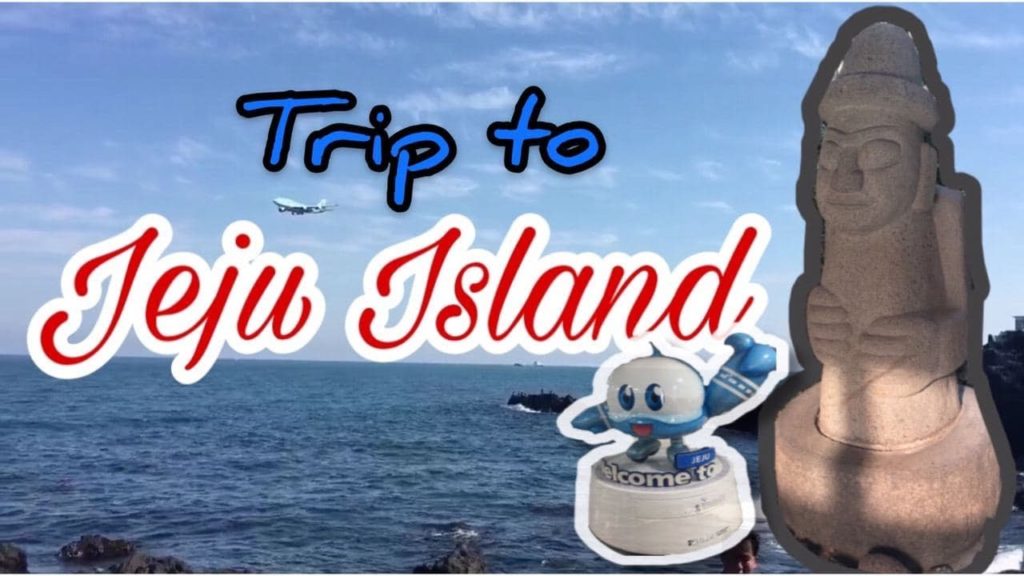Jeju Island (Korean: 제주도; Hanja: 濟州島; Korean pronunciation: [t͡ɕed͡ʑudo]) is the largest island in South Korea, located in the Jeju Province. The island lies in the Korea Strait, below the Korean Peninsula, south of the South Jeolla Province. The island contains a natural world heritage site, the Jeju Volcanic Island and Lava Tubes.[2] Jeju has a moderate climate; even in winter, the temperature rarely falls below 0 °C (32 °F). Jeju is a popular holiday destination and a sizable portion of the economy relies on tourism and economic activity from its civil/naval base.
Historically, the island has been called by many different names including:
Doi (Hangul: 도이, hanja: 島夷, literally “Island barbarian”)
Dongyeongju (Hangul: 동영주; hanja: 東瀛州)
Juho (Hangul: 주호, hanja: 州胡)
Tammora (탐모라, 耽牟羅)
Seomna (섭라, 涉羅)
Tangna (탁라, 乇羅)
Tamna (탐라, 耽羅)
Quelpart,[3][4] Quelparte[5] or Quelpaert Island[6]
Junweonhado (준원하도, 준원下島 meaning southern part of peninsula)
Taekseungnido (Hangul: 택승리도, meaning the peaceful hot island in Joseon)
Samdado (Hangul: 삼다도, meaning “Island of Three Abundances”)
Before the Japanese annexation in 1910, the island was usually known as Quelpart to Europeans;[8] during the occupation it was known by the Japanese name Saishū. The name Quelpart apparently came from the first European ship to spot the island, the Dutch Quelpaert, which sighted it after being blown off course on its way to the Dutch trading base in Nagasaki, Japan, from Taiwan (then the Dutch colony of Formosa). The name “Fungma island” appeared in the “Atlas of China” of M. Martini who arrived in China as a missionary in 1655.
History
See also: Tamna § Historical and archaeological records
The earliest known polity on the island was the kingdom of Tamna.
After Mongol invasions of Korea, the Mongol Empire established a base on Jeju Island and converted part of the island to a grazing area for the Mongol cavalry stationed there.
In the beginning of the 15th century, Jeju Island was subjected to the highly centralized rule of the Joseon dynasty. A travel ban was implemented for almost 200 years and many uprisings by Jeju Island residents were suppressed.
Geography
Jeju is a volcanic island, dominated by Hallasan: a volcano 1,950 metres (6,400 ft) high and the highest mountain in South Korea. The island measures approximately 73 kilometres (45 mi) across, east to west, and 41 kilometres (25 mi) from north to south.
The island formed by volcanic eruptions approximately 2 million years ago, during the Cenozoic era.The island consists chiefly of basalt and lava.
An area covering about 12% (224 square kilometres or 86 square miles) of Jejudo is known as Gotjawal Forest.This area remained uncultivated until the 21st century, as its base of ‘a’a lava made it difficult to develop for agriculture. Because this forest remained pristine for so long, it has a unique ecology.
The forest is the main source of groundwater and thus the main water source for the half million people of the island, because rainwater penetrates directly into the aquifer through the cracks of the ‘a’a lava under the forest. Gotjawal forest is considered an internationally important wetland under the Ramsar Convention by some researchers[29] because it is the habitat of unique species of plants and is the main source of water for the residents, although to date it has not been declared a Ramsar site.
Formation
About 2 million years ago, the island of Jeju was formed through volcanic activity.
About 1.2 million years ago, a magma chamber formed under the sea floor and began to erupt.
About 700 thousand years ago, the island had been formed through volcanic activity. Volcanic activity then stopped for approximately 100 thousand years.
About 300 thousand years ago, volcanic activity restarted along the coastline.
About 100 thousand years ago, volcanic activity formed Halla Mountain.
About 25 thousand years ago, lateral eruptions around Halla Mountain left multiple oreum (smaller ‘parasitic’ cones on the flanks of the primary cone).
Volcanic activity stopped and prolonged weathering and erosion helped shape the island.
Climate
Jeju has a humid subtropical climate. Four distinct seasons are experienced on Jeju; winters are cool and dry while summers are hot, humid, and sometimes rainy.
In January 2016, a cold wave affected the region. Snow and frigid weather forced the cancellation of 1,200 flights on Jejudo, stranding approximately 90,300 passengers.
Reference:
*ignore*
Jeju Island
Jejudo
SouthKorea
Hallabong
Trip.com
Travel Advisory
Korea Tourist
Travel Korea Vlog
#Jeju Island #Jejudo #SouthKorea


AloJapan.com